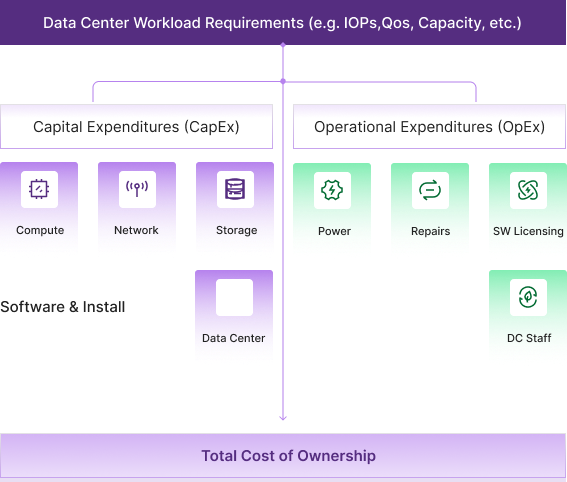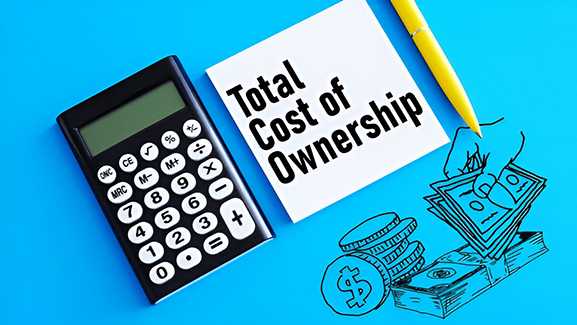Updated September 2025
A total cost of ownership (TCO) model of storage provides a way to understand how customers make purchasing decisions by looking all the costs associated with purchasing and running IT equipment. Business objectives and purchasing criteria vary greatly between customers, and hence a one size fits all TCO model is not adequate for all storage workloads.
We define a TCO model that is well suited for storage by looking at the capital expenditures (CapEx) of the storage and everything else in typical datacenter rack that has typically dominated IT budgets, and model operational expenditures (OpEx) which are dominated by power, cooling, and cost of device failures. This is useful for comparing a solution where the sole purpose is durable storage.
There are many metrics that may be important when modeling TCO for storage, including total system level performance, endurance, and total capacity. This model specifically looks at the TCO in TCO $ / TBe / rack / month. Large and small data centers alike use this as a reference to compare current vs future deployments that are optimized for the sole purpose of storing durable storage.
SSDs are of course much faster than HDDs, so looking at an application performance driven TCO model will most likely favor SSDs when trying to achieve a specific SLA or number of IOPS. Workload inputs to the TCO model that materially change the output are capacity utilization factor, error encoding factor, multi-workload replication factor, and data reduction technology. New in 2025 to TCO model materials is a Performance-Based TCO white paper which introduces a time-aware approach to the TCO model.
SNIA has provided a TCO Model for Storage White Paper and a TCO Calculator
The tutorial below explains the Model and Calculator and walks through examples: A new case study on TCO featuring cryptocurrency and computational storage is available in the SNIA Educational Library
What Goes Into a TCO Model ?

A Performance-Based TCO white paper is now available. This new white paper introduces a time-aware approach TCO model defining TCO for enterprise storage and hyperscale data centers using accelerators. Three case studies illustrate a time-aware approach to TCO examining how to reduce CPU utilization, shorten execution times, and cut energy consumption.
Click on the link below to download the Total Cost of Ownership Model for Storage, which explains what goes into a TCO Model, TCO metrics, modeling the rack configuration, drive input, workload input, and operational expenditures.
Click on the link below to download the TCO for Computational Storage - Compression White Paper. This white paper looks at a case study with Ceph, enabling compression on a single node cluster and comparing it with computational storage. We will use the SNIA Storage TCO model to show the impact of CS on storage costs.
Click on the link below to download an easy to use TCO Calculator based on the TCO White Paper.








